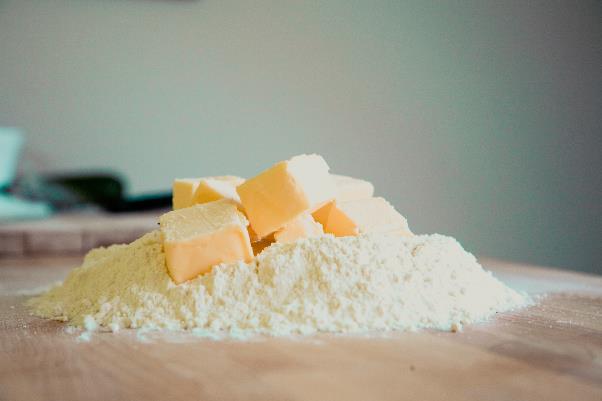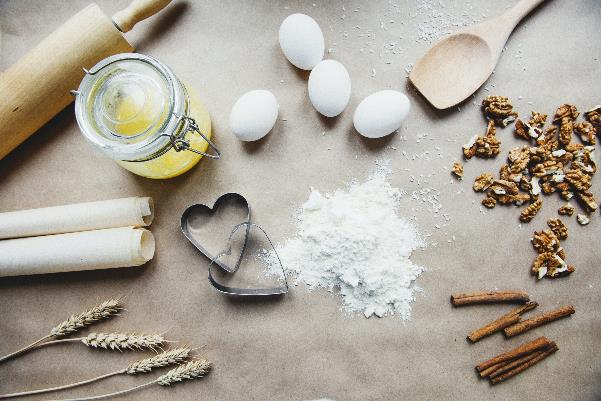How to Measure Wet and Dry Ingredients for Baking – In-Home Guide
Sep 21, 2023 By Triston Martin
Making delicious treats requires the accuracy of wet and dry ingredients for Baking at each step, from measuring wet yeast for baking to dry ingredients used in your special baked item. Whether you're a seasoned baker or a beginner, mastering this fundamental skill is essential for perfecting your recipes.
To ensure your cookies, cakes, and loaves of bread turn out just right, you must understand the difference between wet and dry measuring cups and tablespoons and when to use them. In this article, we'll break down the basics of measuring ingredients by guiding you through easy-to-follow tips to elevate your baking game.
Learn the Basics of Wet and Dry Ingredients for Baking
Understanding the fundamentals of baking measurements is essential for culinary success. Let's start with recognizing the clear differentiation between wet and dry ingredients in baking. Each ingredient plays a unique role in recipe outcomes. When measuring any ingredient related to the recipe, remember that wet ingredients are measured in volume units like cups, tablespoons, and teaspoons. These measurements accurately capture the liquids' quantity and provide you with the volume you need for baking your item.
On the other hand, dry ingredients in baking are weighed and only measured using units like ounces and grams. This weight-based measurement accounts for variations in ingredient density. Understanding these basic measurement principles empowers bakers to bake recipes with confidence.
How You Can Measure Wet Ingredients in Baking?

For baking, you often need to measure things like water, milk, or wet yeast. It might seem like any old cup can do the job, but using the right cup is really important. That's where liquid measuring cups come in.
Have you ever tried pouring water into a narrow glass at the top? It's a bit tricky, right? Well, regular cups are a bit like that narrow glass they have different shapes that can make measuring liquids accurately harder.
On the other hand, liquid measuring cups are designed just for liquids. They have a spout and markings showing exactly how much you're pouring. This makes sure you get the right amount every time.
Measure the Liquids Accurately
Measure wet ingredients in baking correctly by using a liquid measuring cup.
- First, find a flat or even place to put your measuring cup. This helps make sure you're measuring correctly.
- Gently pour the liquid into the measuring cup, and as you pour, it's a good idea to stop and check your eye level. By looking directly at the measuring lines on the side of the cup to get an accurate volume
- Once the liquid reaches the right measurement mark as you desire, stop pouring the liquid. Make sure not to tilt the cup while pouring the liquid. This can change the measurement or even can spill the liquid.
And that's it! You've successfully measured your wet ingredients in baking. Remember, using a liquid measuring cup and following these steps will help your recipes turn out just how you want them to.
How You Can Measure Dry Ingredients in Baking?

When you're cooking or baking, there is no doubt that you will need to measure ingredients like flour and sugar. To measure dry ingredients in baking, you must use "dry measuring cups." These cups hold things like flour or sugar without spilling over the edges. Another tool you can use is a weighing scale. This helps you measure the exact weight of your dry ingredient, which can be precise.
Measure The Dry Accurately
Measure dry ingredients in baking properly.
- Before scooping your dry ingredient, like flour, take a spoon and give it a little fluff.
- Scoop the ingredients into the measuring cup or spoon when you're ready to measure, and don't pack it too tightly.
- To get the exact measurement, take a flat-edge object like a knife or the back of a spatula and sweep it across the top of the measuring cup or spoon. This levels off the excess ingredient, leaving you with a precise measurement.
You should use a trick called the "spoon-and-level" method when dealing with flour. Use a spoon to gently fill the cup instead of scooping flour directly with the measuring cup. Once slightly heaping, use the straight edge to level it off. This helps avoid packing the flour and will give you a more accurate measurement.
Common Mistakes and How to Avoid Them
Mistakes happen, but we're here to help you avoid common blunders with wet and dry ingredients for baking measurements.
- One common slip-up is scooping flour directly from its container. This can pack the flour and lead to more than you need. To avoid this, lightly spoon the flour into your measuring cup and level it off.
- Another hiccup to dodge is not leveling off dry measuring cups. If you heap the ingredients directly, you will have too much, directly affecting your baking outcome.
- Pouring while the measuring cup isn't level can skew the amount. Make sure your cup sits flat and pour slowly for an accurate measure.
- Using the wrong measuring tool for wet and dry ingredients for baking can throw off your recipe. Remember, liquids go in liquid measuring cups and dry ingredients in dry measuring cups.
Conclusion
Baking is fun when you know "what and how much." Baking is an art, and a perfect baked item represents love and a true fragrance of heaven, but it only comes when you master the measuring ingredients used in baking. In this guide, we have shared tips to help you measure perfectly.








